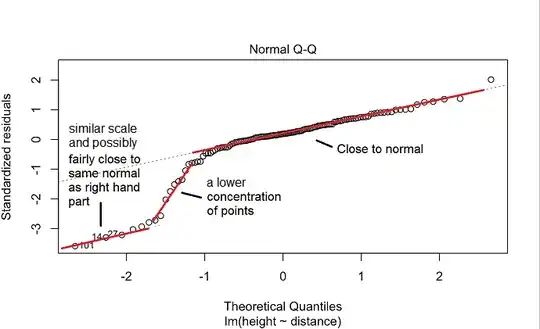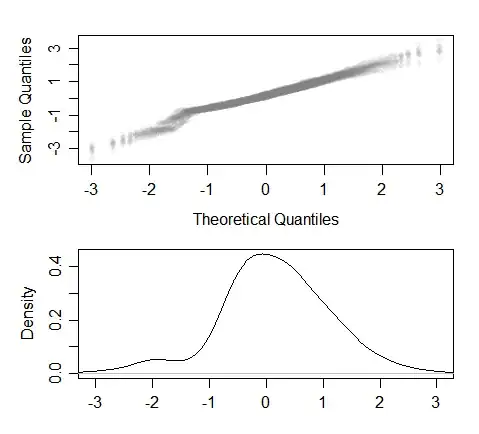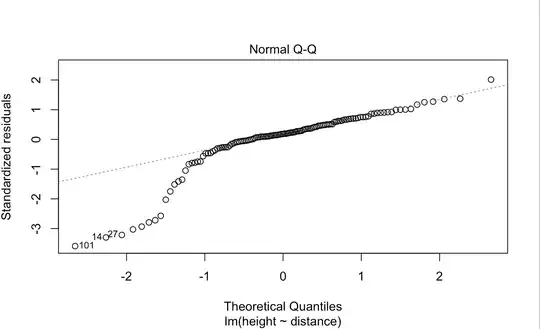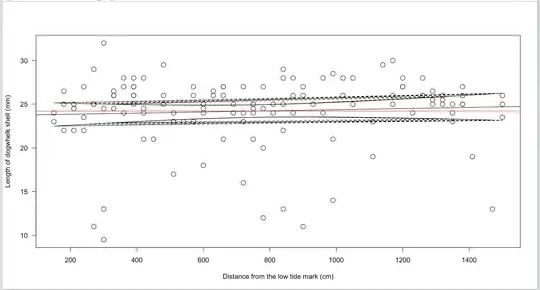The shape of the plot is consistent with a left-skew, possibly bimodal distribution (with a small mode on the left).
It is possible that there are two groups with similar spread (such as a mixture of two normals with about the same standard deviation, the smaller subpopulation having a lower mean than the rest). This would suggest the possibility of a missing predictor -- which would correspond to the two groups).
However, the following discussion relies on the regression assumption that the conditional mean and spread of errors is zero and constant respectively, so that we can interpret the QQ plot of residuals as conveying information about the conditional distribution of errors. [Note that interpreting the marginal distribution of the residuals this way makes little sense if the residuals actually come from several different distributions. Other diagnostics - including those relating to other possible predictors - must be considered first]
Note that there's a "steep part" between the two less steep sections at the left and right, but either side of that steep part the slope is similar:

This suggests a reasonably normal-ish looking in the center and on the right and also in the left tail, but that there's a "gap" between with fewer points (in the ballpark of -1.3).
So the distribution is probably bimodal - (with the second peak being a pretty small bump on the left). You can get a similar appearance by generating data from a normal distribution and leaving out a substantial proportion of points in an interval near -1.3.
Like so:

This is ten sets of simulated data of (originally) 400 values each from a standard normal with points near -1.3 then having some chance of being omitted; resulting in on average 349 points with a somewhat bimodal appearance and whose qq plots typically having something like the appearance of your own -- with points at the left and at the center-and-right seeming to lay near roughly parallel lines, and in between a steeper section (indicating the lower density)



